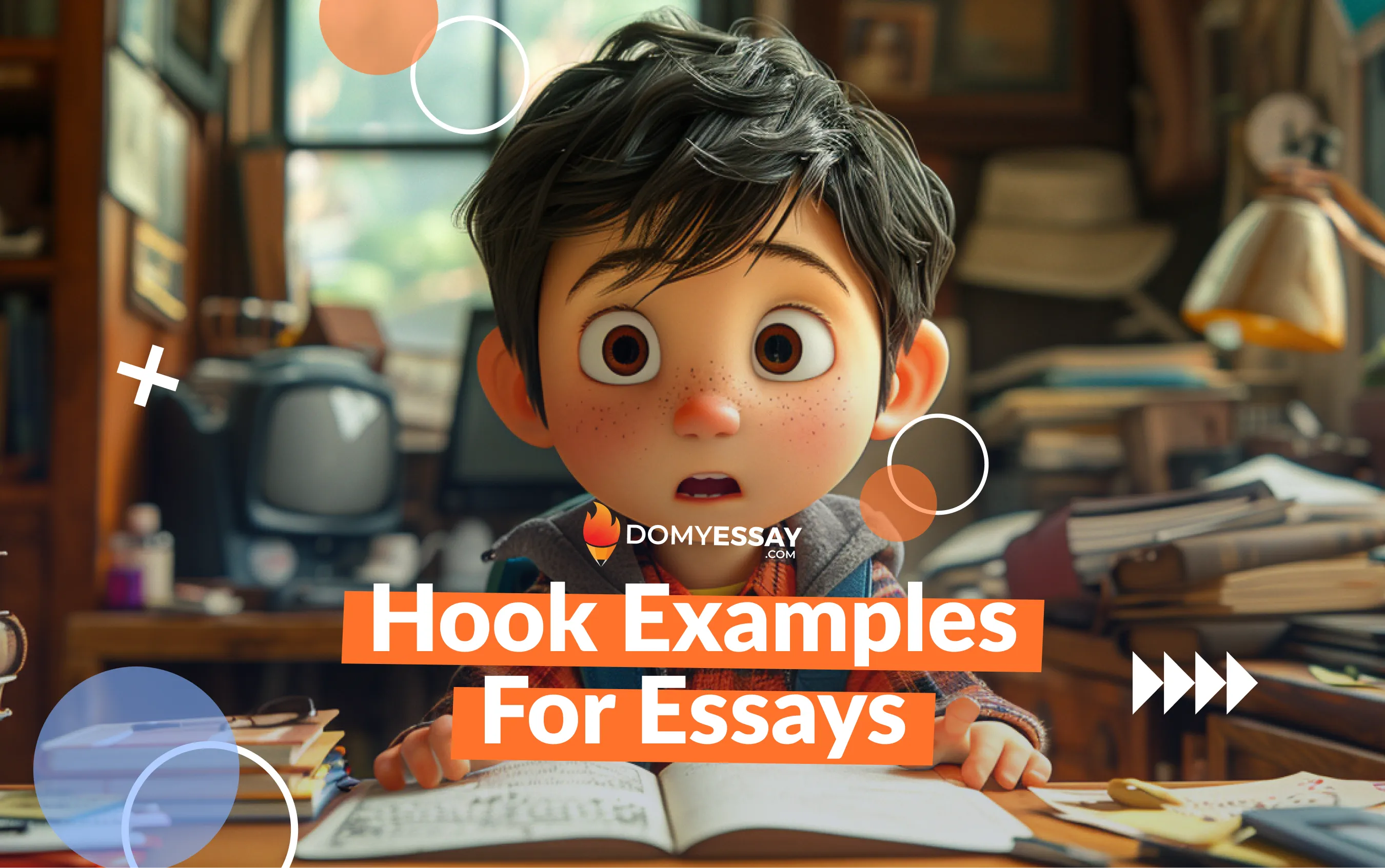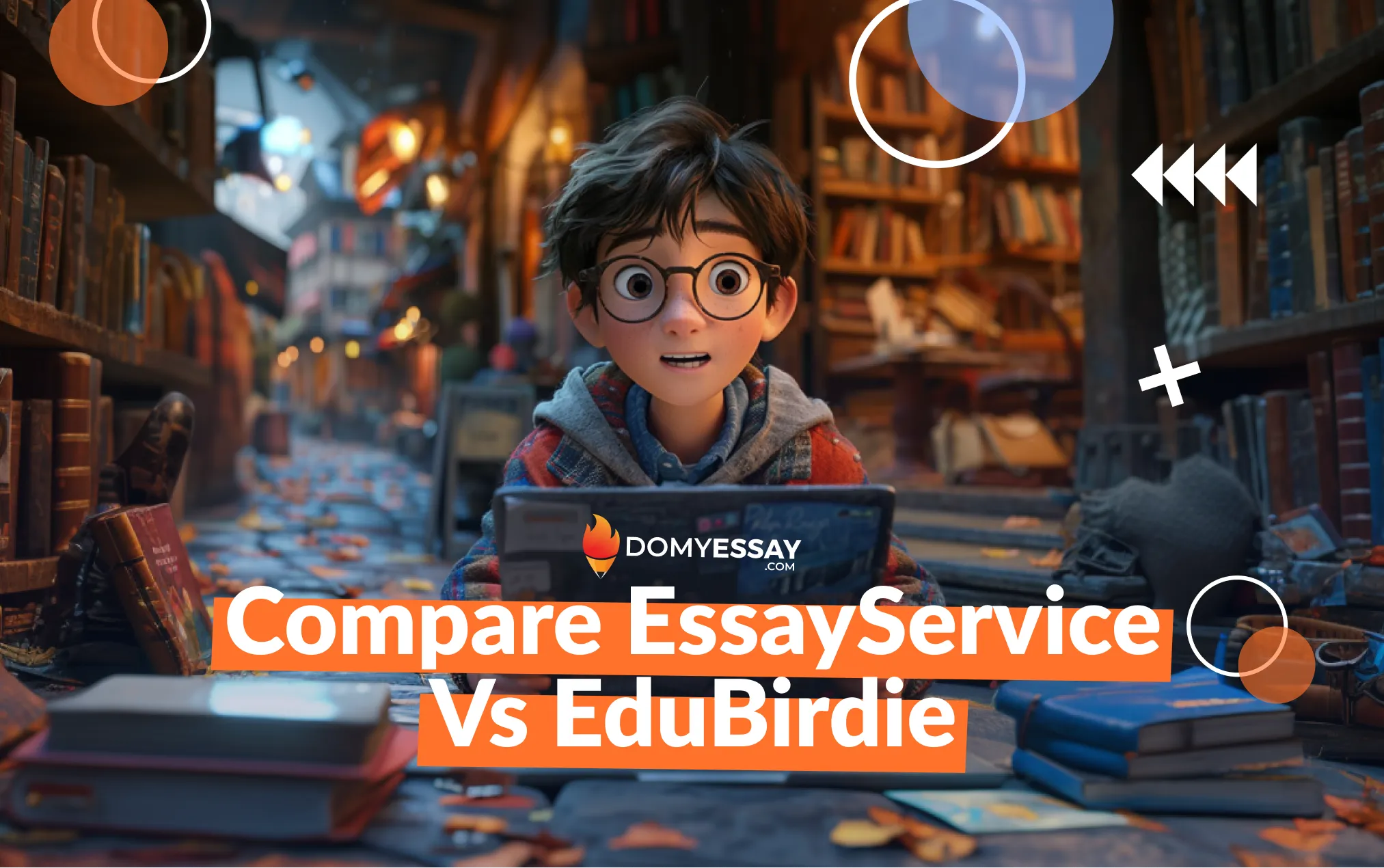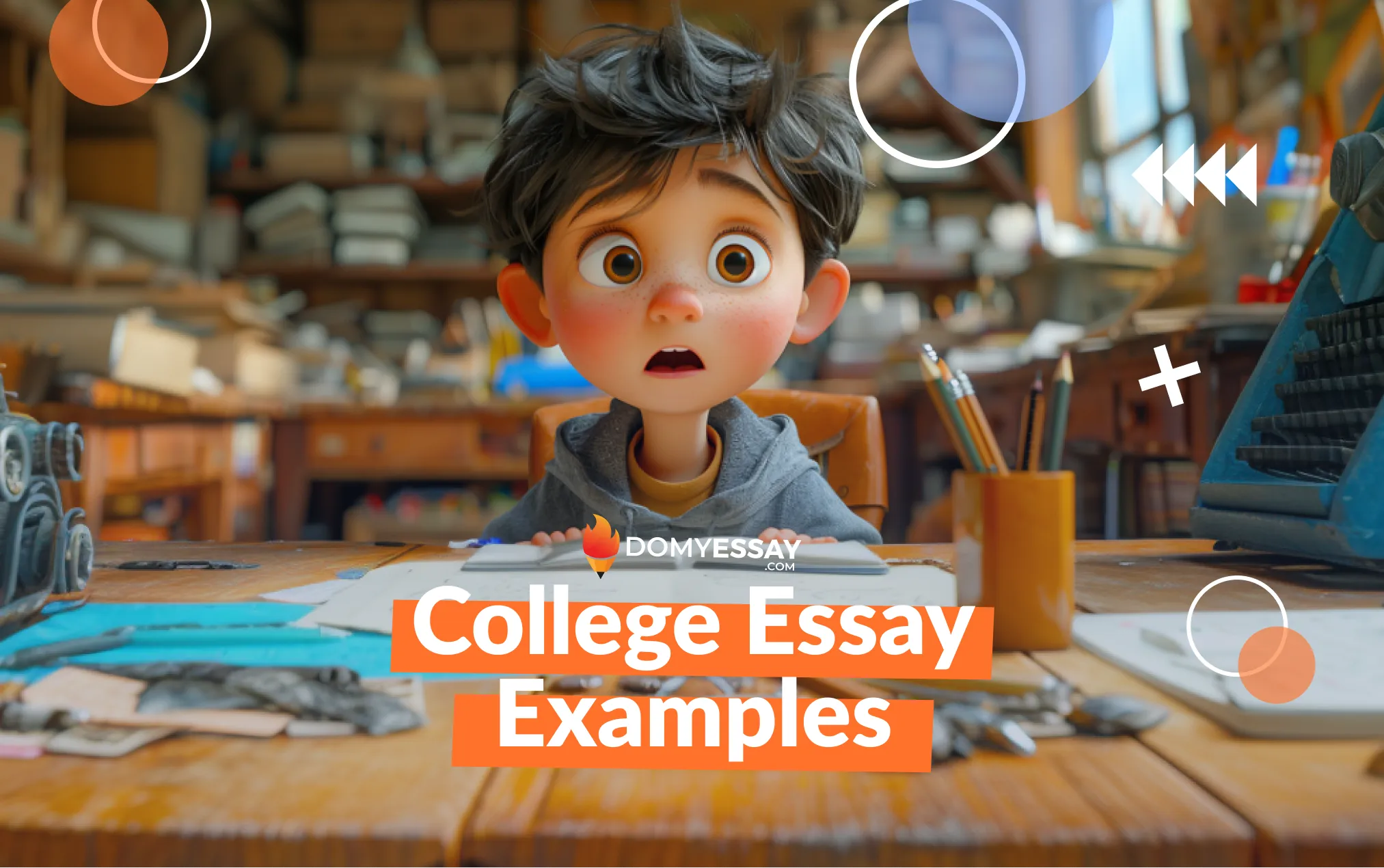Essay hooks are just like the bait in fishing: they’re meant to pull your readers in, gain their undivided attention, and compel them to continue reading your essay.
Creating effective hooks, however, is easier said than done. Coming up with one can be tougher than writing the rest of the essay, especially if you don’t have a lot of experience.
That’s why we decided to break down the 12 most common types of hooks, along with good hook examples for essays for each of them.
Can’t manage to find the right hook for your essay? DoMyEssay’s experts can help you craft one or write a whole essay from scratch. Our help is just one simple order form away!
But First: What Is a Hook in an Essay?
A hook is, essentially, the attention grabber of your essay. It’s the opening, the first statement you make in the text. While most hooks typically last only for a single sentence, some types are more complex and can take up the whole paragraph (case in point: story and anecdotal hooks).
Essentially, your hook is where you make the first impression on your readers. Do it right, and they’ll think to themselves: “This essay is worth reading; I want to know more about what this person has to say on the topic.”
Powerful hooks are important in any piece of writing, not just in essays. That’s because attention is in short supply these days. Ergo, capturing it requires a compelling opening that makes readers excited to learn more about what you have to say. Even movies and TV shows use hooks in their opening scenes to pique the viewer’s interest!
Ready to take your essay introduction to a new level with compelling hooks? We’ll break down attention grabber hook examples for essays below, so keep reading!
Your opening line never seems to capture attention?
DoMyEssay’s writers can craft an essay that keeps your readers on the edge of their seats, from the first line to the last.
12 Types of Essay Hooks with Examples
When it comes to coming up with compelling hooks, it’s better to see how it’s done once than read a hundred explainers. So, here are the 12 most common types of hooks for making a good first impression, complete with examples of hooks for essays from our professional writers.
Question Hook
Opening your essay with a question immediately engages the reader as it prompts them to think critically about the topic. When used as a hook in an essay, the question usually concerns its central topic, with your thesis statement serving as your response to it.
Here are our three question hook examples for essays:
- What’s worse for the environment: taking a plane from San Francisco to New York City or streaming one movie a week for a year straight?
- This hook challenges the preconceived notions of calculating the impact of everyday actions on the environment right out of the gate.
- What if all of your data suddenly became publicly available?
- What-if questions are perfect for illustrating risks or threats, but you can also use hypotheticals to paint a vivid picture of potential benefits.
- Would you be able to live without the internet today? Perhaps not, but that’s the reality for millions of Americans who don’t have access to a stable internet connection.
- This question invites the reader to put themselves into someone else’s shoes, which works great for promoting awareness about issues.
Statistic Hook
Hooks that mention statistical data on the topic are typically suitable for evidence-packed or argumentation-heavy essays. They present a relevant piece of data to drive your thesis statement home.
Here are our three statistic hook examples for essays:
- Even though 78% of businesses use AI in at least one function as of 2025, only 25% of them reported having gained “significant value” from their AI projects.
- This hook communicates the key juxtaposition at the heart of the essay: organizations overinvesting in AI without getting much value in return.
- The average attention span is steadily declining. In 2004, it stood at 2.5 minutes. The recent studies put it at a mere 47 seconds today.
- This example doesn’t try to cram all the stats into a single sentence, proving that a good hook doesn’t have to boil down to the first sentence.
- Cloud adoption offers an ROI of 180% for an average company. So, why do some companies continue to use on-premises infrastructure?
- This hook blends a statistic hook with a question one, proving that you don’t need to stick to a single type.
Anecdotal Hook
Know a short story or situation that perfectly encapsulates the point you want to get across? Start with it! Here are several anecdotal hook examples to show you how to do it:
- Two years ago, I decided to upgrade my laptop. But, as excited as I was to get my new laptop delivered, I couldn’t figure out what to do with my old one. It was working perfectly fine, so I didn’t want to just throw it out. Two years later, it still sits in my desk drawer.
- This is a classic example of describing a personal anecdote as an opener in an essay on reducing e-waste.
- Amanda Riley went from a regular person to the object of ire on Twitter overnight. The reason? A video of her arguing with a fellow passenger on an airplane went viral. But this isn’t a story about her five minutes of fame: Amanda ended up losing her job.
- Your anecdote doesn’t have to be a lived experience; you can lift it from the news or social media.
- Imagine you got arrested for something as simple as scribbling your nicknames onto a wall at your school. Sounds extreme, right? And yet, this is exactly what school police officers do to some of their students for infractions as minor as this.
- Anecdotal hooks can also posit a hypothetical scenario to illustrate your point.
Quotation Hook
If there’s a quote that reflects your thesis statement with outstanding accuracy, you can open with it, too. Just make sure to credit its author!
Here are our three quotation hook examples:
- In 1954, Alice Bailey posited that “one of our immediate educational objectives must be the elimination of the competitive spirit.” Seventy years later, however, our education system still relies on competition to drive learning outcomes.
- This quote illustrates that the central idea of the essay isn’t a new one, giving it more authority as a result.
- “One cannot have superior science and inferior morals. The combination is unstable and self-destroying,” Arthur C. Clarke wrote in 1966. Today, we could as easily apply it to our progress in generative AI.
- Make sure to add your interpretation of the quote; otherwise, it’ll feel out of place and tacked on.
- “Failure makes success so much sweeter,” said Wilbur Smith, and he might have as well described why we, the readers, feel for Maya Angelou’s triumph after years of facing discrimination and adversity.
- Connect the quote to the topic of your essay to avoid confusing your readers.
Bold Statement Hook
Is your thesis statement already unconventional and bound to surprise or shock your readers? Don’t beat around the bush: use it as your opening line (without making any unfounded claims, of course).
Here are three bold statement hook examples to help you do it:
- Reaganomics is at the origins of modern-day deregulation and income inequality in the United States.
- This statement may be controversial since economic policies under Reagan also promoted economic and job growth.
- The present-day United States is on the path to becoming an authoritative state.
- For maximum impact, you can keep your bold statement short and sweet.
- Not everyone is created equal in the eyes of the law. Convicted felons, for example, are stripped of their voting rights.
- While bold statements on their own are great to capture attention, make sure to back them up with examples or other evidence. Otherwise, your readers might scoff at your introduction instead.
Simile / Metaphor Hook
In case you have a perfect comparison for the central subject of your essay, open it with a metaphor or a simile involving that comparison. Here are some simile and metaphor hook examples to help you:
- Social media is an addiction machine, perfectly designed to keep us engaged and scrolling.
- This metaphor helps paint a vivid picture of the impact of social media on human cognition.
- Opening a social media feed is like playing roulette: you don’t know what you’ll get when you scroll down.
- This is a simile – notice the use of “like” – that communicates a similar idea to our first hook example.
- Lie detectors are about as reliable as fortune-telling, yet their results remain admissible in court in multiple states across the U.S.
- This hook could also count as a bold statement since it gets straight to the point of the essay.
Surprising Fact Hook
A surprising fact is, by definition, surprising. So, it’s perfect for a hook that shocks your readers into paying attention to what you have to say. Here’s how you can use it in practice:
- Today, you don’t have to know how to code to start extorting money with ransomware. You can purchase ready-to-go ransomware on the dark web and set it up in 15 minutes.
- This hook directly engages the reader by using the second-person narrative, which helps put the reader into the shoes of a potential scammer.
- Somewhere in the Pacific Ocean, a new island, twice the size of Texas and made out of plastic waste, persists in its floating.
- This hook quickly introduces the reader to the sheer scale of the plastic pollution problem by giving a concrete, shocking example of it.
- The majority of those filing for bankruptcy using Chapter 13 end up financially worse off than before.
- You can combine the surprising fact with specific stats on the topic to boost your credibility.
Historical Fact Hook
A historical fact can either help you demonstrate that the topic or the issue is nothing new or compare and contrast the current state of affairs with former approaches. You can also draw parallels between current and past events.
Here are three examples of using such a hook:
- If you were a stowaway on a transatlantic ship in the 1910s, you could disembark, answer a couple of questions, and start making a new life for yourself in the United States. You didn’t need a visa or a passport, and you’d still have come to the country “the right way.”
- This hook effectively shows the contrast between the current immigration system and cross-border travel arrangements a century ago
- In 1997, Deep Blue was the first AI program to beat a reigning world chess champion, Garry Kasparov.
- This throwback to the history of AI surpassing human capabilities showcases the strengths of analytical AI with down-to-earth examples.
- The 1930 Smoot-Hawley Act imposed a 20% tariff on goods imported to the United States. Despite the claims that the tariffs would boost the domestic economy, they only exacerbated the recession and increased poverty. Today, the White House seems to be on track to make the same mistake.
- This hook draws clear parallels between the current tariff policies and the historical precedent.
Dialogue Hook
Dialogue hooks are most appropriate in creative fiction and non-fiction writing. They can help you fully immerse your reader in the narrative from the very first line.
Here are our three dialogue hook examples:
- “Are you listening?” Sarah waved her hand in my face as if she wasn’t sure I realized that we were about to walk on stage at all.
- This hook not only throws the reader into the middle of a scene but also effectively provides context for the scene.
- “Is this seat taken?” Sometimes, life-changing relationships start with simple, ordinary questions like this one.
- In this example, the dialogue helps introduce the reader to the core theme of the essay instead.
- “I can’t do this.” The thought kept looping on repeat in my mind as I was about to jump out of the airplane.
- Like the first example, this hook takes us straight to the action, although this time, the dialogue is internal.
Definition Hook
Providing a definition in your opening line can be a strong statement hook if your essay focuses heavily on definitions and terminology. That said, it’s easy to come across as lazy with a definition hook, so make sure to use it only when it adds to the narrative. Here’s how:
- The terms AI and generative AI may be used interchangeably, but they don’t describe the same thing. Artificial intelligence is the umbrella term for technology that mimics human cognition. Generative AI is its subfield that focuses on producing text, images, and videos.
- This hook successfully contrasts two terms to clear up potential confusion on the reader’s part.
- Union busting, a collection of practices aimed at disrupting trade union formation, is commonplace within large corporations like Starbucks and Amazon.
- This hook packages the definition with a sentence emphasizing the rampancy of union busting, thus ensuring it doesn’t bore the reader.
- There are many ways to define a sovereign state, but for this essay, I will use the definition outlined under the declarative theory of statehood.
- This opening helps clarify the terminology the author will be using moving forward, preventing potential confusion.
Story Hook
You can kick off your essay with a short story spanning one paragraph, whether it’s based on your lived experience or borrowed from other sources. That said, it should be pertinent to the overall topic of the essay; otherwise, it’ll be out of place.
Here are three great story hook examples:
- The last time my grandmother called me, I was at volleyball practice, so I couldn’t pick up. She left me a voicemail that was just 12 seconds long. I still play it from time to time, just to hear her voice.
- This introduction dives straight into the heartbreaking territory, but it could be perfect for an essay about deeply personal experiences with grief.
- The stage was set, the curtain rose… And I couldn’t get a single word out of my mouth as it’d gone dry. I fled the stage in embarrassment.
- Short but sweet, this story unfolds within just three sentences. Still, it lays a great foundation for discussing the author’s experience with overcoming their fear.
- Working outside in extreme heat is no joke. I had to tend to the garden once last week, and after an hour, no amount of water or even shadow could make me feel better.
- This story could work great even for an essay on a topic like climate change, as it paints a vivid picture of its impact on everyday life.
Description Hook
Description hooks focus on sensory details to paint a vivid image of a place, person, or object. Here are three description hook examples to show them in action:
- The library was silent, with only the soft rustle of pages and the occasional cough echoing between the tall shelves.
- This vivid description immediately helps the reader understand where the scene is set.
- The kitten was barely the size of my home slipper, and its high-strung, pleading meows bounced off the walls as I carried it into my apartment.
- This description hook doesn’t just describe the kitten being saved by the author, but also sets the stage for the story.
- His eyes, as tense and heavy as the air right before the thunderstorm, held a glint of mischief.
- This hook introduces you to one of the characters in the essay and shows how you can use metaphors or similes to enhance your descriptions.
Which Hook Type Should You Use?
The type of hook you should use depends on the essay’s topic, discipline, and, of course, its type. Here’s our short breakdown of which hook types suit which essays best:
- Argumentative: A hook for argumentative essay should help you sway your reader’s opinion, so prioritize shocking facts, stats, rhetorical questions, and bold statements.
- Narrative: A narrative essay calls for immersion in the story, and you can achieve it with an anecdote, dialogue, description, or story hook.
- Expository: As expository essays aim to inform and explain, writers typically start them with statistics, surprising facts, quotations, or definitions.
- Descriptive: A descriptive essay focuses on sensory details and vivid imagery, so open one with a description, metaphor, or anecdote for maximum impact.
3 Pitfalls to Avoid When Using Hooks
To make your hooks a great addition to the essay, avoid these common mistakes that we keep seeing in students’ essays:
- Overusing hooks. You need only one hook at the beginning of the essay, no more and no less. Refrain from using more hooks throughout the main body.
- Choosing an irrelevant hook. The hook should be pertinent to the topic of your essay and encapsulate or hint at your thesis statement. Otherwise, it’ll feel out of place.
- Setting the wrong tone. If your essay is written in a strictly academic tone, starting with an informally recounted anecdote will give your readers whiplash.
Need a Powerful Essay from Start to Finish?
If words escape you, our experts can step in and take that essay off your plate.
Final Thoughts
Learning to write a great hook will take some time, so don’t be too harsh on yourself when you’re only getting started. That said, you should get started: without knowing how to engage your reader from the very start, even your best pieces of writing will fall flat.
So, practice writing attention-grabbing openings for every assignment that comes your way. Trust us: it’ll become a valuable skill once you have to send out job applications or promote anything!
Struggle with engaging readers despite all the practice? Remember: our professional essay writing service can lend you a hand at any moment.




